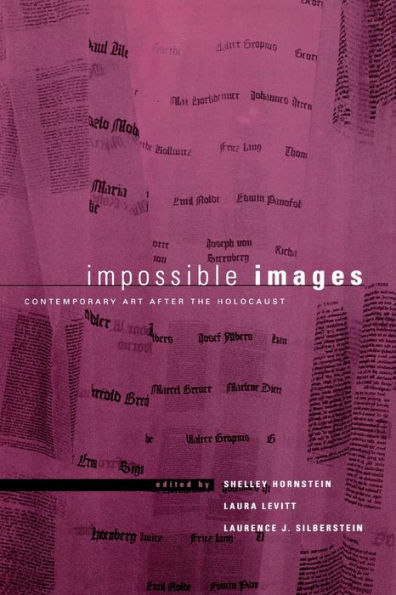5
1
9780814798263



Impossible Images: Contemporary Art After the Holocaust available in Hardcover, Paperback

Impossible Images: Contemporary Art After the Holocaust
- ISBN-10:
- 0814798268
- ISBN-13:
- 9780814798263
- Pub. Date:
- 10/01/2003
- Publisher:
- New York University Press
- ISBN-10:
- 0814798268
- ISBN-13:
- 9780814798263
- Pub. Date:
- 10/01/2003
- Publisher:
- New York University Press

Impossible Images: Contemporary Art After the Holocaust
$32.0
32.0
In Stock

Product Details
| ISBN-13: | 9780814798263 |
|---|---|
| Publisher: | New York University Press |
| Publication date: | 10/01/2003 |
| Series: | New Perspectives on Jewish Studies , #4 |
| Pages: | 285 |
| Product dimensions: | 6.00(w) x 9.00(h) x 0.90(d) |
About the Author
What People are Saying About This
From the B&N Reads Blog
